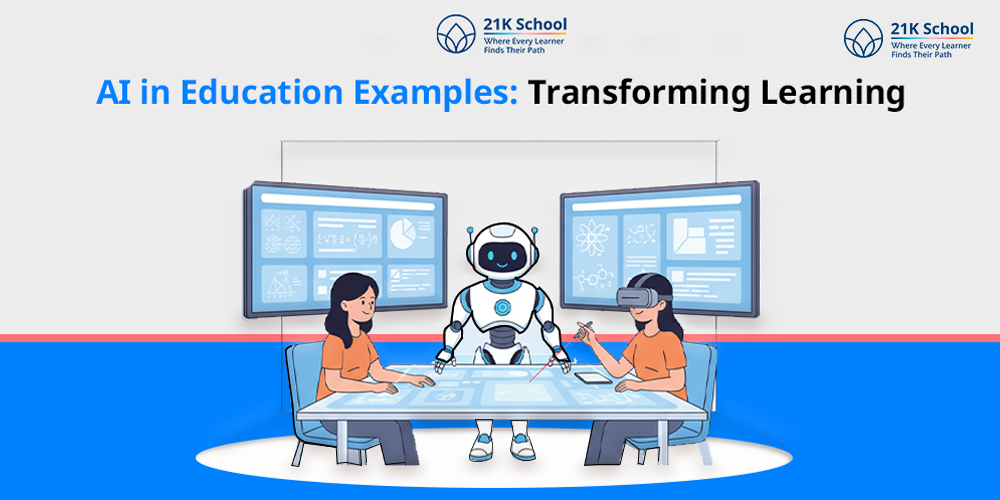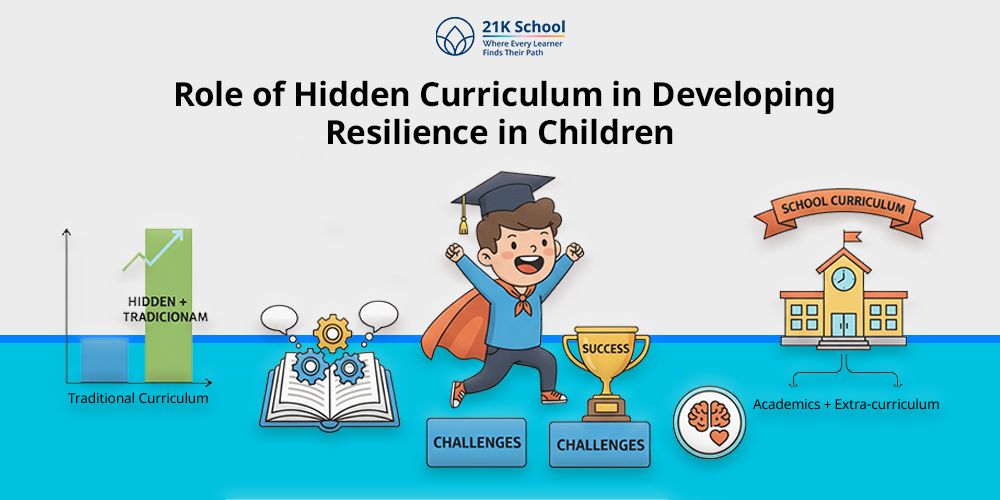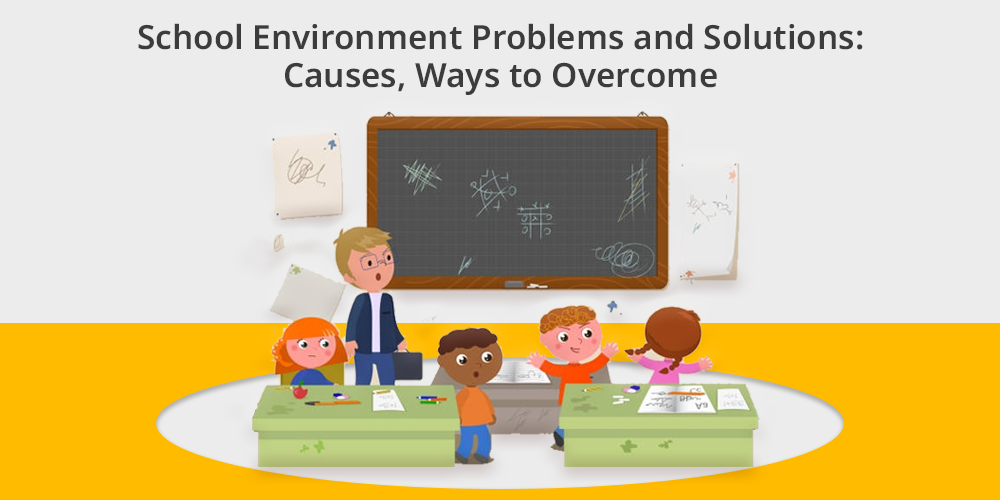
School environment problems are the types of problems that schools face due to external factors. School environment problems include pollution, water pollution, waste management problems, and natural calamities like floods, tsunamis, earthquakes, etc.
These environmental problems create hindrances in the teaching and learning process, as well as have an impact on children’s overall health and affect students’ mental health as well.
School environmental problems also occur due to bad air quality, overcrowded classrooms, lack of infrastructure, inadequate greenery, and so on.
These types of problems cause students to get hampered and hinder their true potential, as students find it difficult to adjust in the classrooms with such a poor environment.
It is essential to overcome these problems with effective, sustainable approaches that help in creating a positive learning environment.
Contents
What are School Environment Problems?
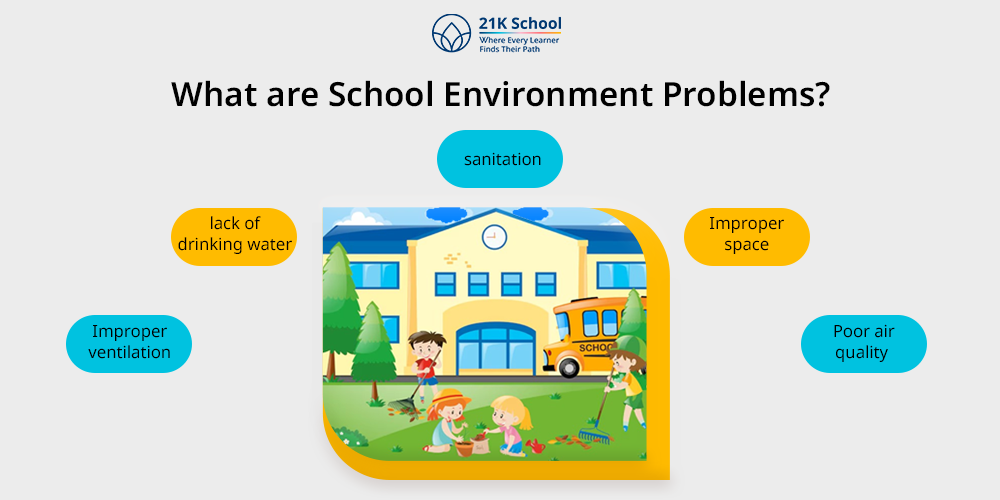
School environment problems occur due to various reasons such as improper ventilation, lack of drinking water, sanitation, improper space, poor air quality and so on. These types of environmental problems in schools hamper students’ health as well as the learning process.
It is essential for management to create a safe and comfortable environment to enhance the teaching and learning process. A positive learning environment also helps to create an inclusive education environment.
Causes of Environmental Problems in Schools
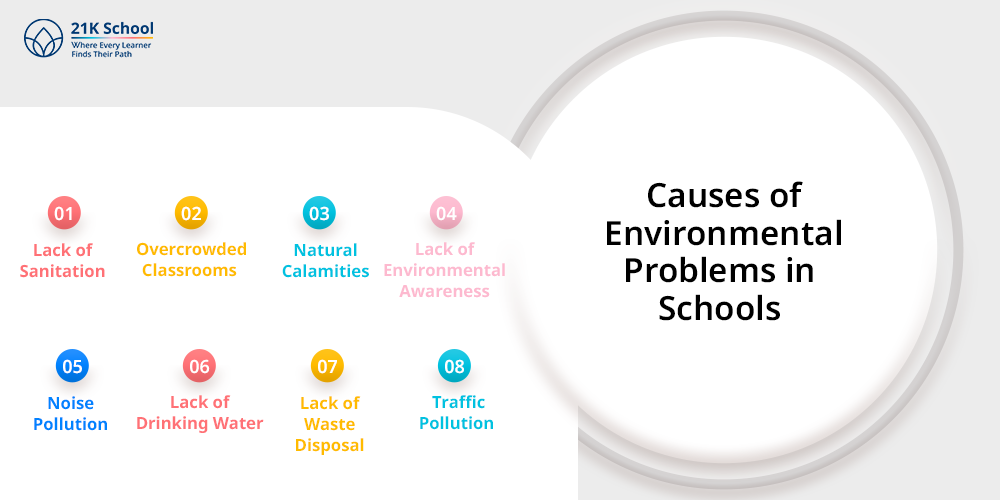
Environmental problems occur due to various reasons, such as Natural disasters, crowded classrooms, poor sanitation and pollution in all its forms have a negative impact on students’ health and learning outcomes.
Below, you can check what the school environment problems are in India.
1. Lack of Sanitation
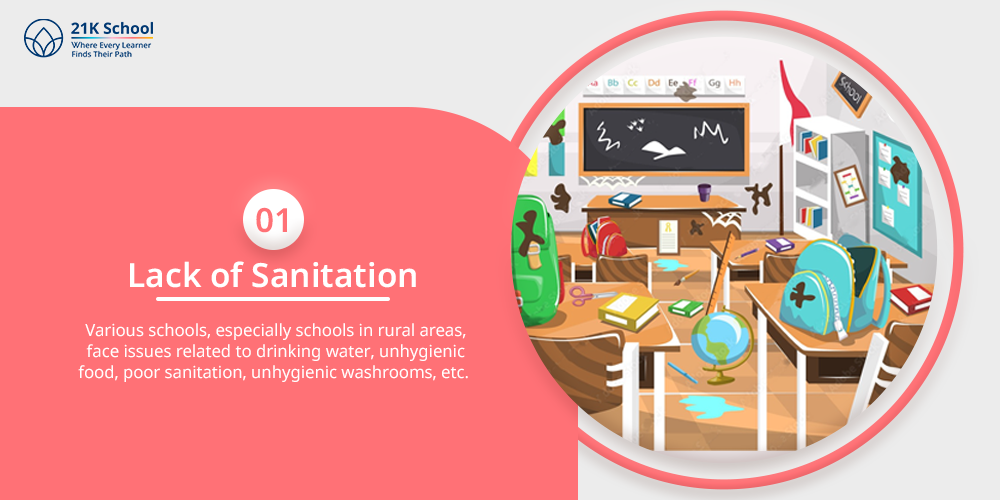
Lack of sanitation causes hygiene-related issues in schools. Various schools, especially schools in rural areas, face issues related to drinking water, unhygienic food, poor sanitation, unhygienic washrooms, etc.
These are one of the major issues that cause environmental issues in public schools. These types of issues affect children’s mental health and physical health adversely.
2. Overcrowded Classrooms
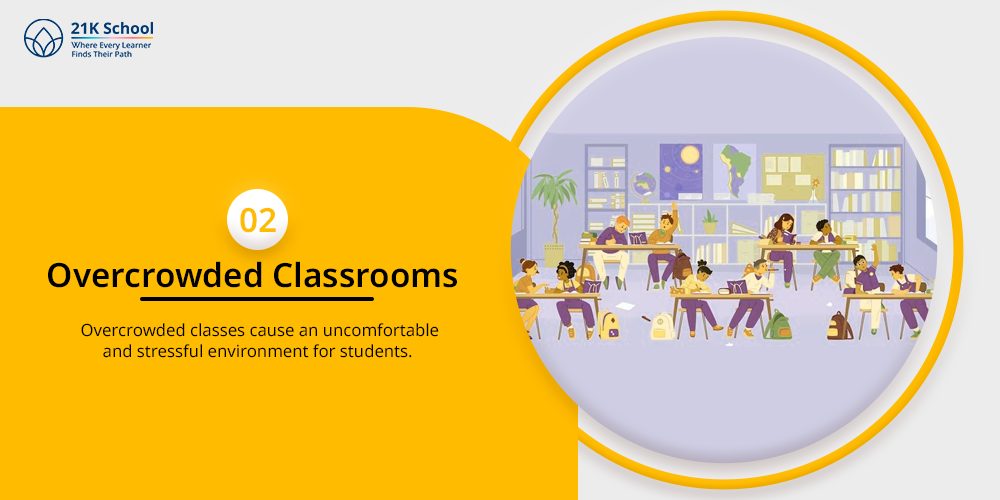
Overcrowded classrooms are one of the major environmental challenges in schools. Overcrowded classes cause an uncomfortable and stressful environment for students.
This creates suffering among students, such as exam stress, anxiety, depression, etc. Overcrowded classrooms also hamper students’ learning potential.
3. Natural Calamities
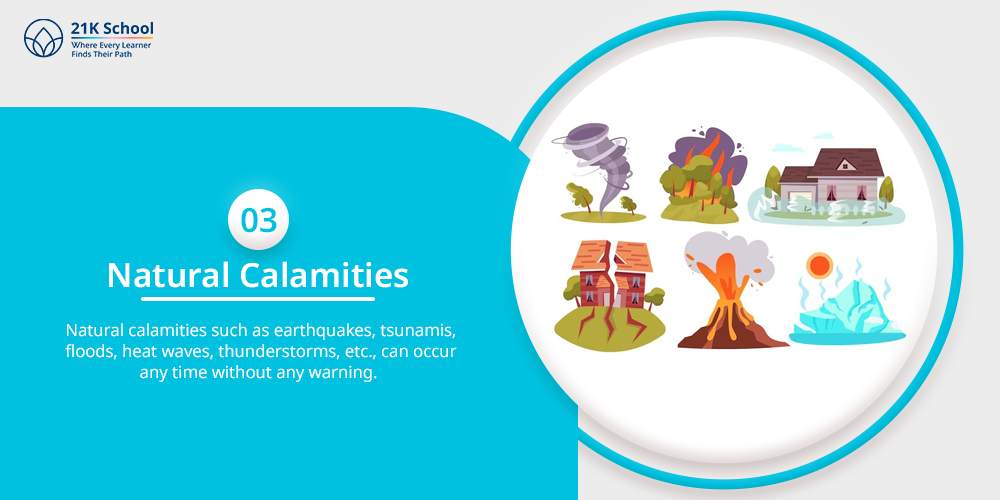
Natural calamities such as earthquakes, tsunamis, floods, heat waves, thunderstorms, etc., can occur any time without any warning.
This natural phenomenon is a serious environmental problem in schools that hampers the classroom’s learning and causes safety risks among students.
4. Lack of Environmental Awareness
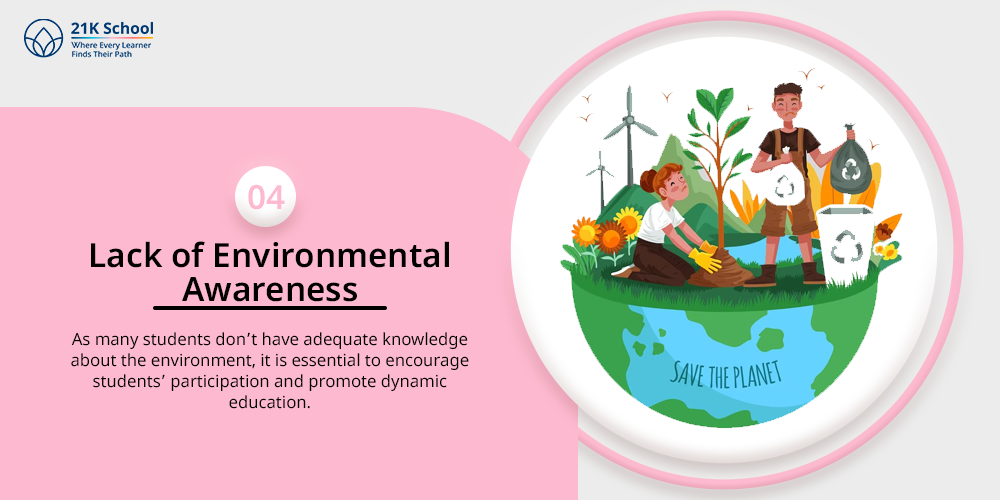
Lack of environmental awareness among students and teachers is one of the major reasons for schools.
As many students don’t have adequate knowledge about the environment, it is essential to encourage students’ participation and promote dynamic education.
5. Noise Pollution
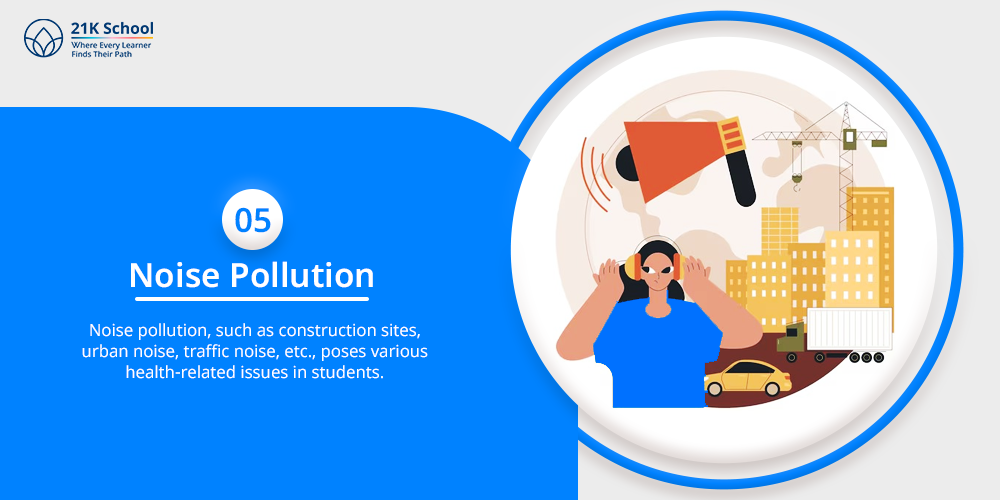
Noise pollution is one of the major problems that hinders classroom education. Noise pollution, such as construction sites, urban noise, traffic noise, etc., poses various health-related issues in students.
Noise disruptions during instructional activities can hinder the teaching and learning process in a school setting.
6. Lack of Drinking Water
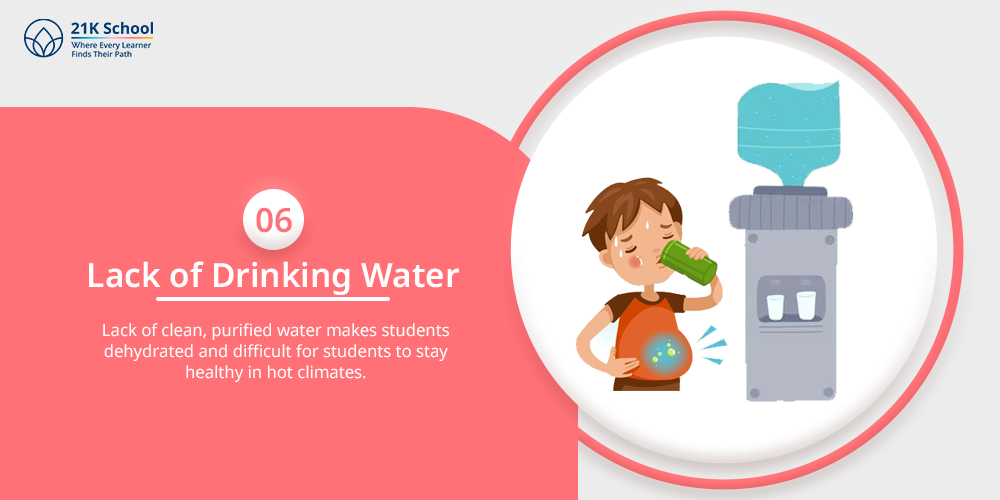
Many schools don’t have adequate water supplies, which causes major problems in schools.
Lack of clean, purified water makes students dehydrated and difficult for students to stay healthy in hot climates.
Schools, especially in rural areas, are dependent on government water and don’t have a water setup or purifiers.
7. Lack of Waste Disposal
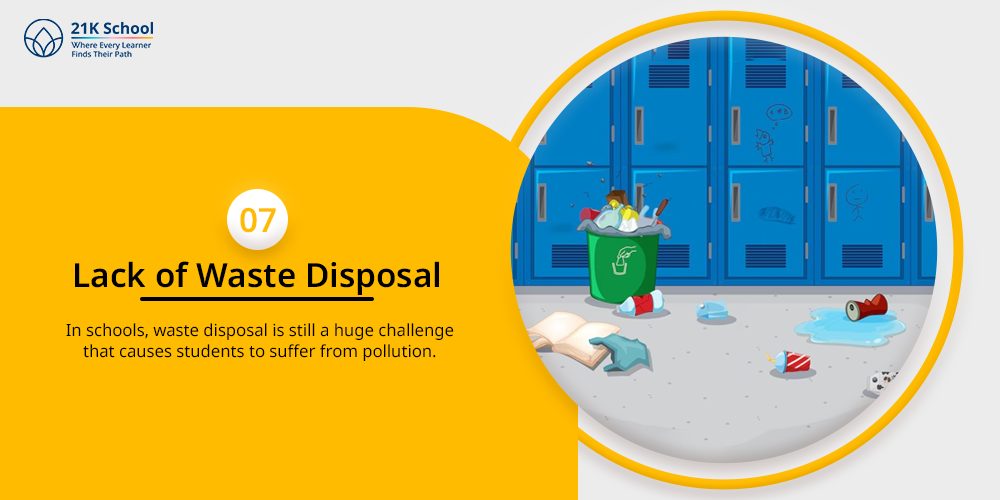
In schools, waste disposal is still a huge challenge that causes students to suffer from pollution.
Littering and insufficient recycling are examples of improper waste management techniques that lead to unhygienic conditions and environmental harm.
Due to this, students become more prone to health-related issues and makes them ill more frequently.
8. Traffic Pollution
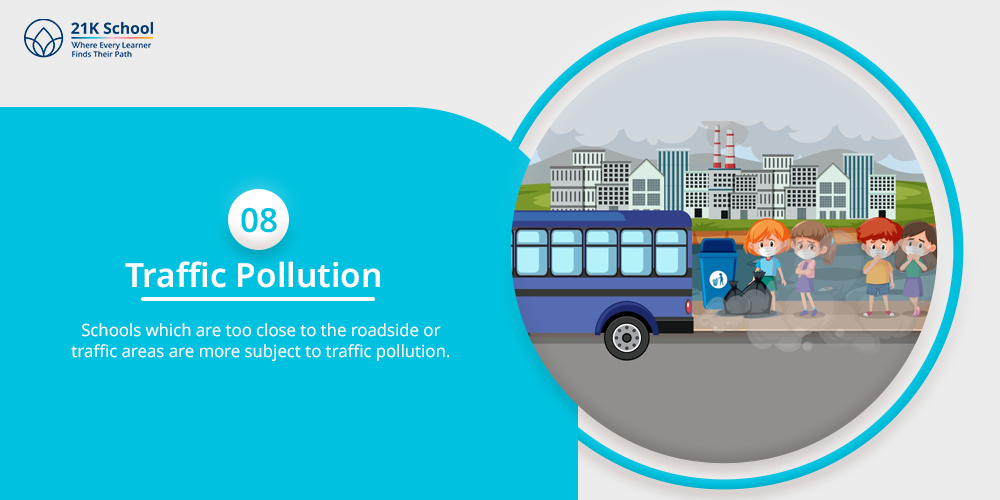
Traffic pollution is a major cause of environmental problems due to noise and air pollution. Schools which are too close to the roadside or traffic areas are more subject to traffic pollution.
Students’ health is further impacted by the noise and air pollution that hinders their health.
Some Other Environmental Issues for Schools
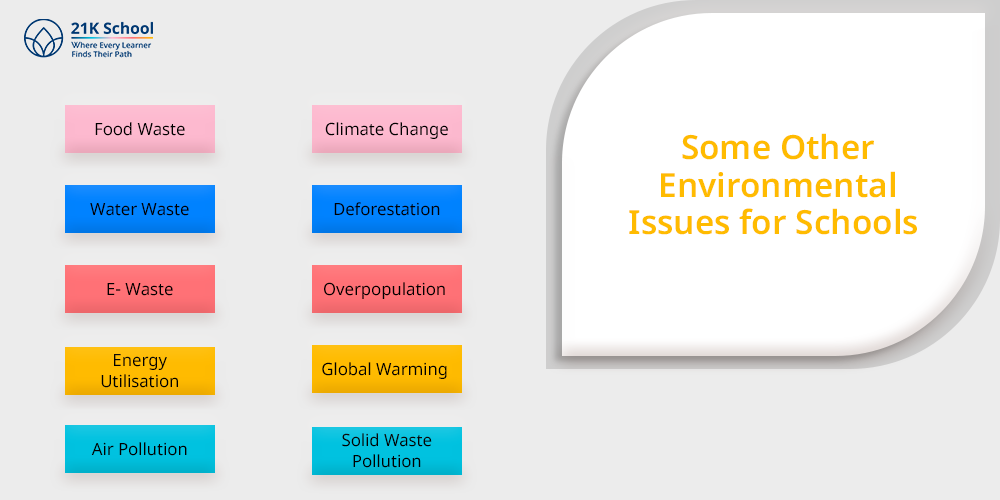
Along with the internal matter, other environmental issues are also there; these environmental issues are major issues that are changing our climate day by day.
Environmental problems also create hindrances in school education and impact on students’ health and minds. Here are some other environmental issues.
1. Food Waste
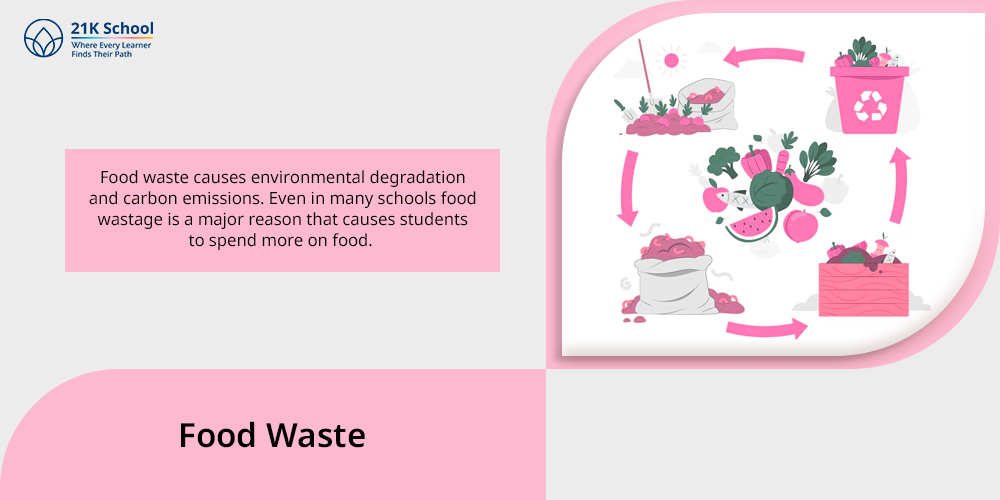
Food waste is one of the major causes of environmental problems in the entire world, especially among school children who waste lot of food.
Food waste causes environmental degradation and carbon emissions. Even in many schools food wastage is a major reason that causes students to spend more on food.
2. Water Waste
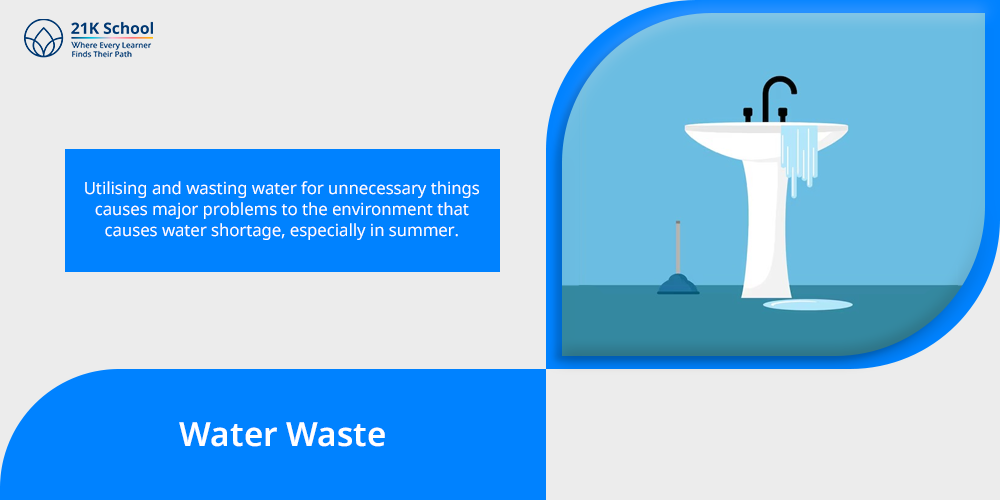
Utilising and wasting water for unnecessary things causes major problems to the environment that causes water shortage, especially in summer.
Water leaking from faulty taps, leaking valves, pipes, etc., in schools causes environmental hindrances.
Even in many countries, water shortage is still a very big challenge for people. Even in a few states of India, people face a lack of water in the summer times.
3. E- Waste
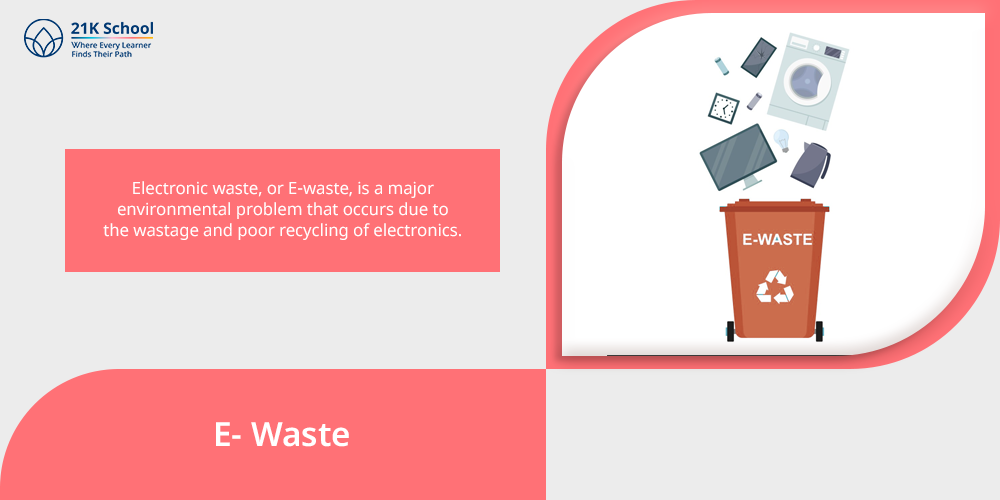
Electronic waste, or E-waste, is a major environmental problem that occurs due to the wastage and poor recycling of electronics.
Schools are also facing environmental problems due to e-waste, which causes high prices of electronics products.
Even in schools, a wide range of electronic devices were distributed, such as tablets, mobile phones, computers, etc. Which exploits nature and harms the environment.
4. Energy Utilisation
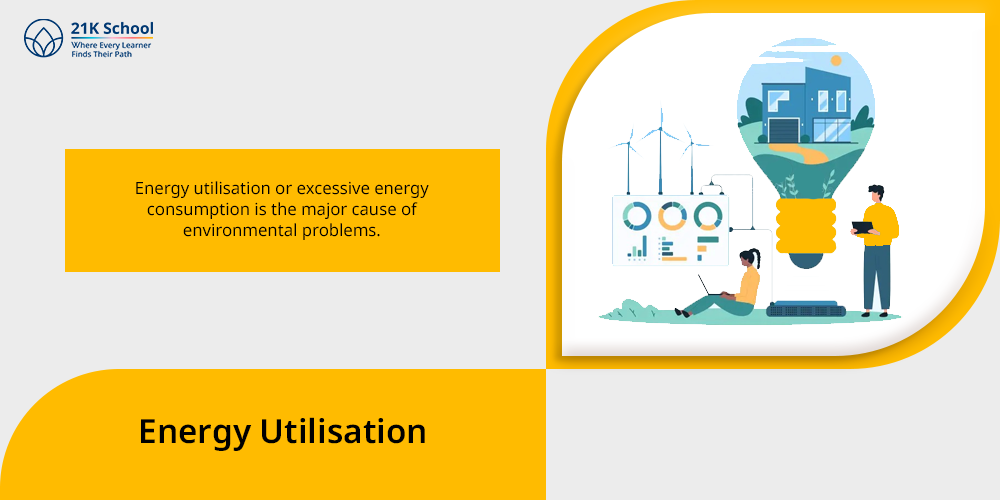
Energy utilisation or excessive energy consumption is the major cause of environmental problems.
With the implementation of digital classrooms the traditional education has changed from pen and paper to laptops and smart boards.
With implementing these technologies in school causes major energy utilisation that hampers the environment.
5. Air Pollution
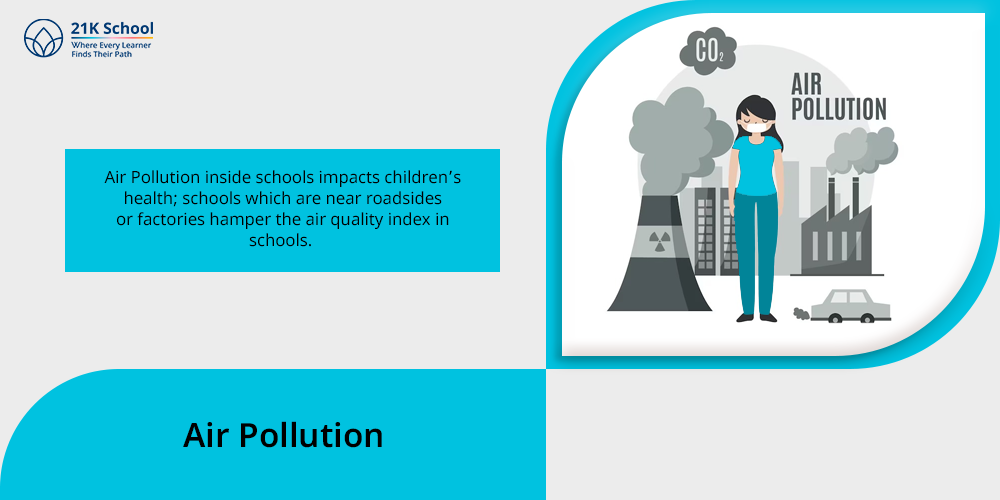
Air pollution is the major cause of environmental degradation that hampers standard of living.
Air Pollution inside schools impacts children’s health; schools which are near roadsides or factories hamper the air quality index in schools.
Even constructions of schools also cause air pollution that make it challenging for students to effectively engage in the learning method.
6. Climate Change
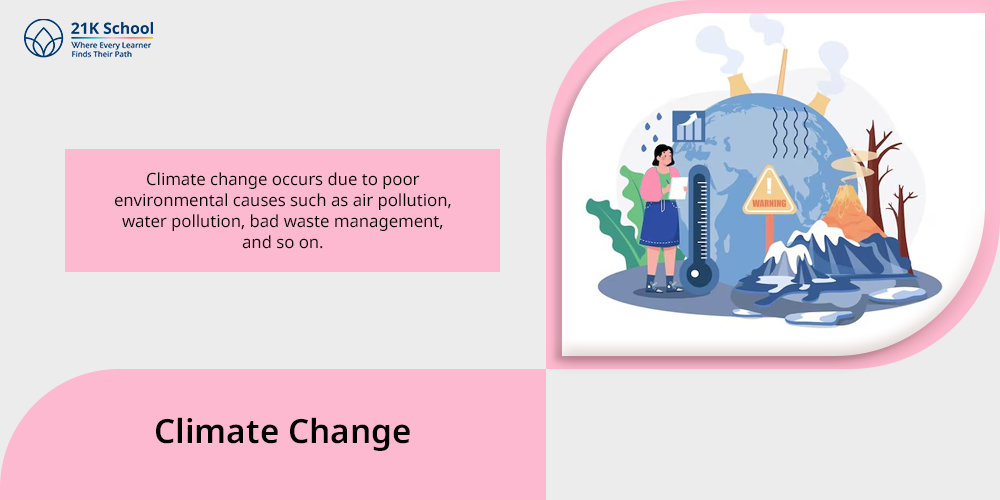
Climate Change is also one of the major problems due to environmental issues.
Climate change occurs due to poor environmental causes such as air pollution, water pollution, bad waste management, and so on.
This creates a problem in developing social and emotional learning among students.
7. Deforestation
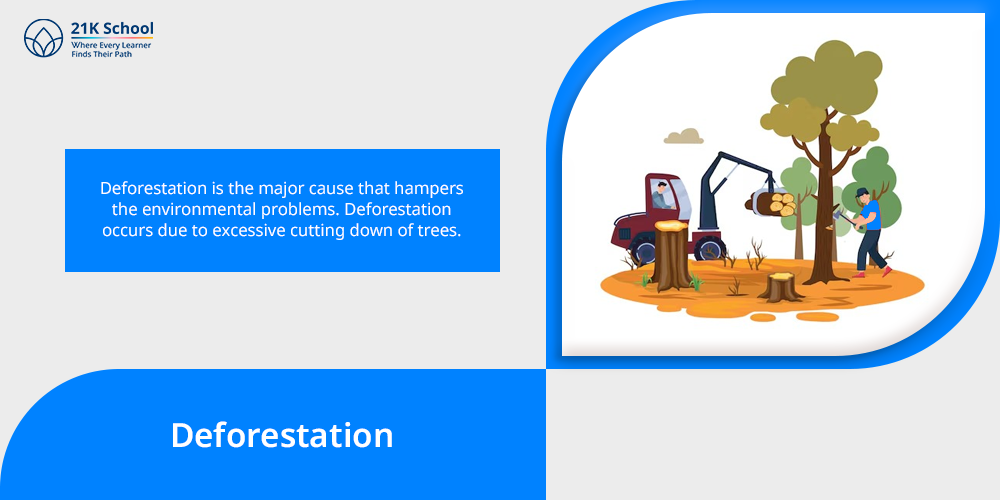
Deforestation is the major cause that hampers the environmental problems. Deforestation occurs due to excessive cutting down of trees.
Deforestation causes heat waves, due to which students find it difficult to get to schools.
8. Overpopulation
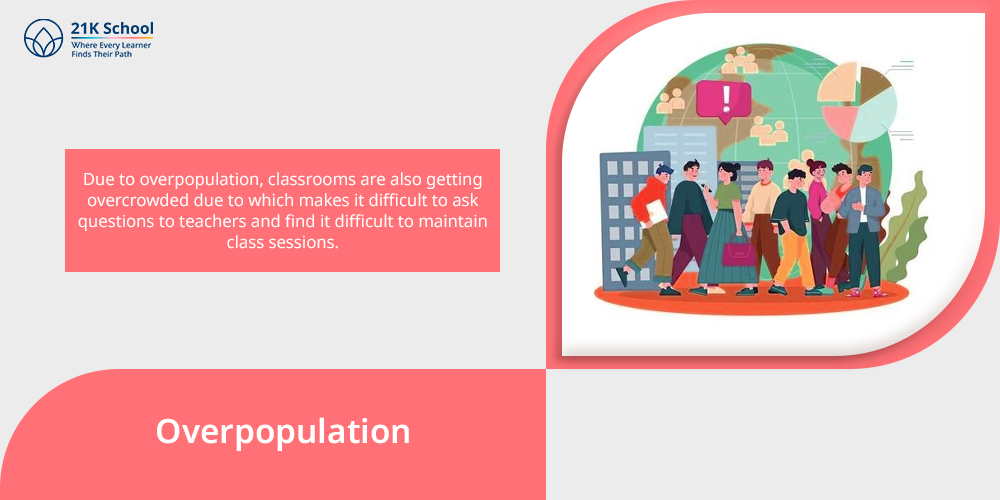
Overpopulation is the problem of excessive population due to a high birth rate. Many countries have high birth rates which causes overpopulation.
Due to overpopulation, classrooms are also getting overcrowded due to which makes it difficult to ask questions to teachers and find it difficult to maintain class sessions.
9. Global Warming
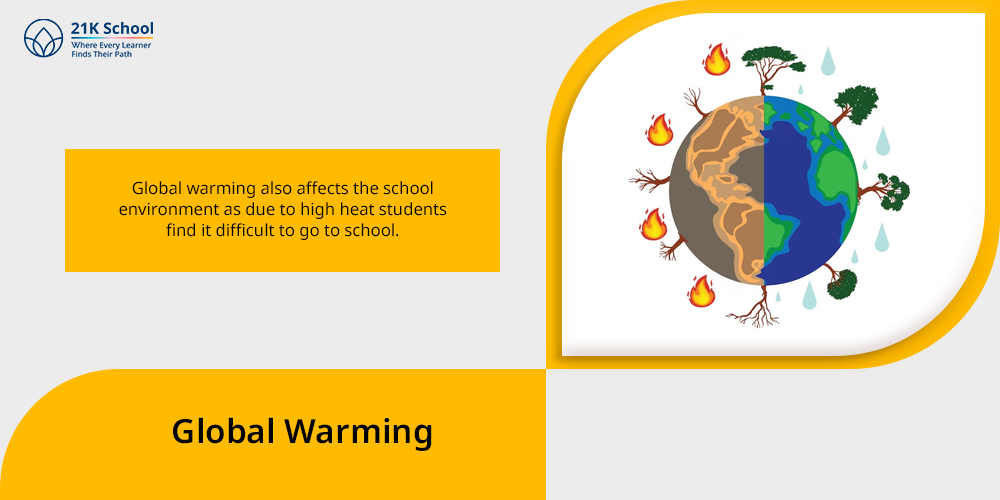
Global warming occurs due to environmental degradation, and due to global warming, natural calamities such as extreme heat, tsunamis, and unpredictable storms occur more frequently.
Global warming also affects the school environment as due to high heat students find it difficult to go to school.
10. Solid Waste Pollution
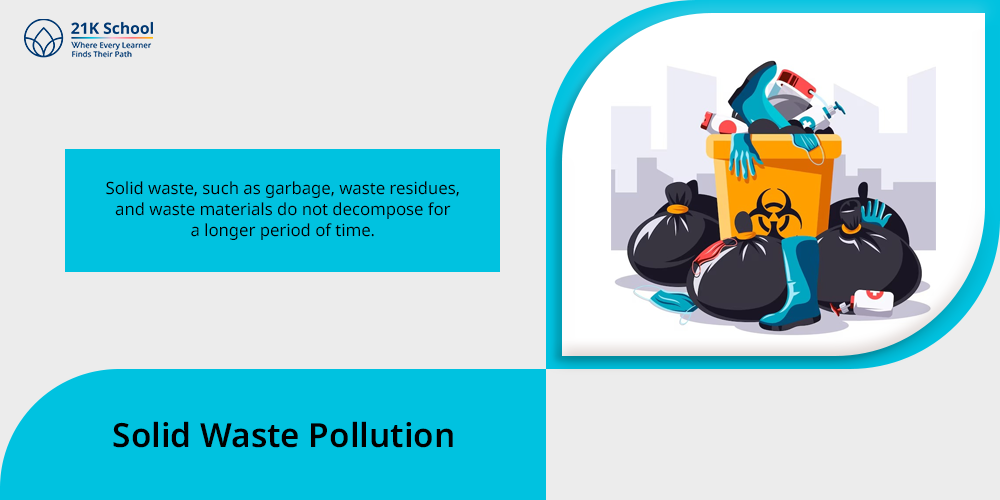
Solid waste pollution is a major problem of environmental degradation. Solid waste, such as garbage, waste residues, and waste materials do not decompose for a longer period of time.
Various solid wastes also occur from schools that deplete nature and cause a serious environmental problem.
Solutions for School Environment Problems
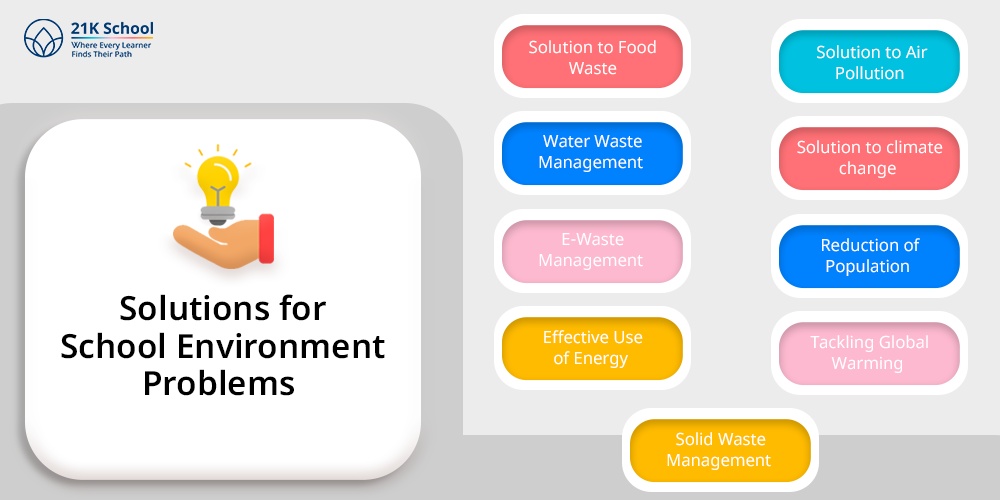
Environmental problems create a huge impact globally. It is essential for us to mitigate the problem with effective solutions.
Environmental problems can be overcome by effective strategies such as e-waste management, water waste management, reducing population, effective utilisation of energy and so on.
Here are the solutions to the environmental problems mentioned below.
1. Solution to Food Waste
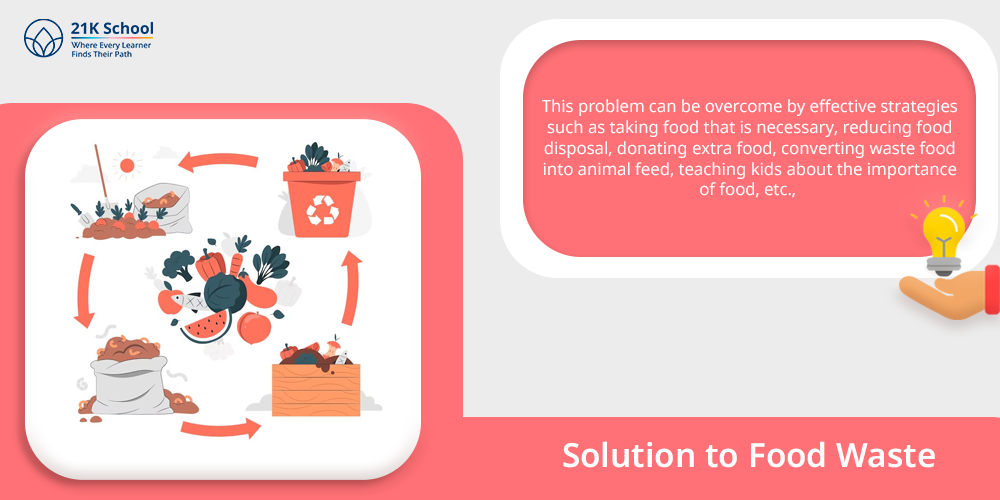
Food waste is a major environmental problem globally.
This problem can be overcome by effective strategies such as taking food that is necessary, reducing food disposal, donating extra food, converting waste food into animal feed, teaching kids about the importance of food, etc., which can be used to reduce food wastage.
2. Water Waste Management
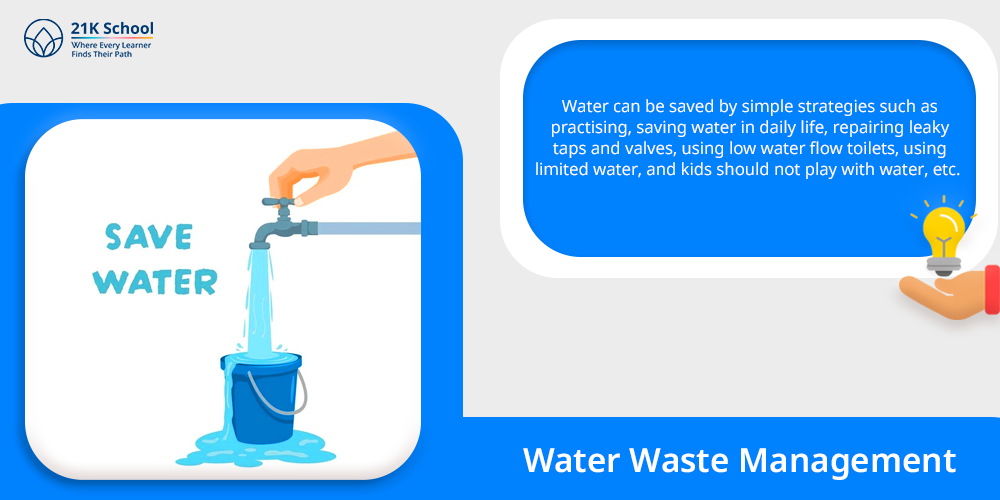
Water waste management is very essential in developing countries.
Water can be saved by simple strategies such as practising, saving water in daily life, repairing leaky taps and valves, using low water flow toilets, using limited water, and kids should not play with water, etc.
Even schools can help students incorporate water conservation into school lessons. By utilising all the simple steps, excessive water waste can be mitigated.
3. E-Waste Management
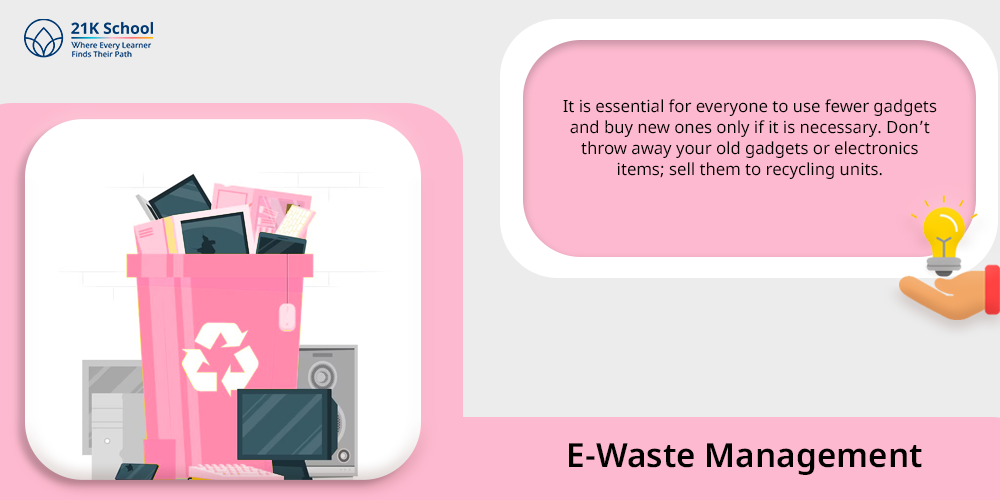
E-waste management is basically about electronics waste, e-waste is a toxic pollutant that hampers the quality of the soil and water. It is essential for everyone to use fewer gadgets and buy new ones only if it is necessary.
Don’t throw away your old gadgets or electronics items; sell them to recycling units.
Schools also must focus on pen and paper mode of writing as compared to the impact of virtual learning, and use it when only necessary.
4. Effective Use of Energy
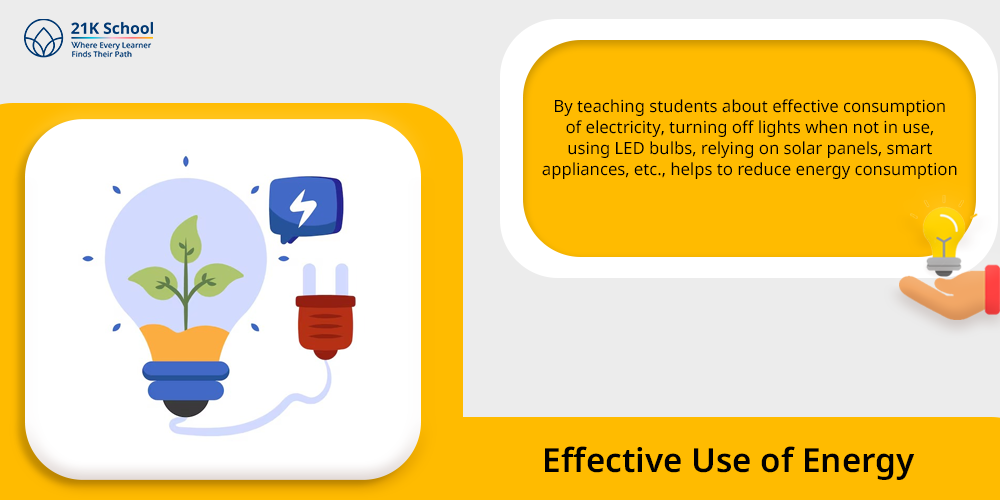
Energy is a very vital source, and it should be efficiently saved.
By teaching students about effective consumption of electricity, turning off lights when not in use, using LED bulbs, relying on solar panels, smart appliances, etc., helps to reduce energy consumption, even by making schools open and relying on solar and battery units will also help to save tons of energy.
5. Solution to Air Pollution
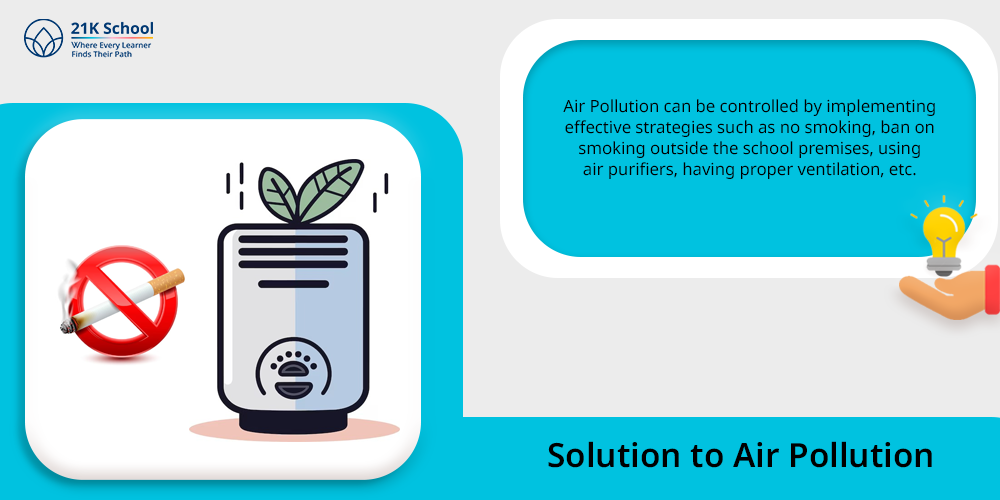
Air pollution is the major environmental threat that hampers nature.
Air Pollution can be controlled by implementing effective strategies such as no smoking, ban on smoking outside the school premises, using air purifiers, having proper ventilation, using fewer cars, using car pull for less money, walking for short distances, etc., will help to reduce pollution residues.
6. Solution to climate change
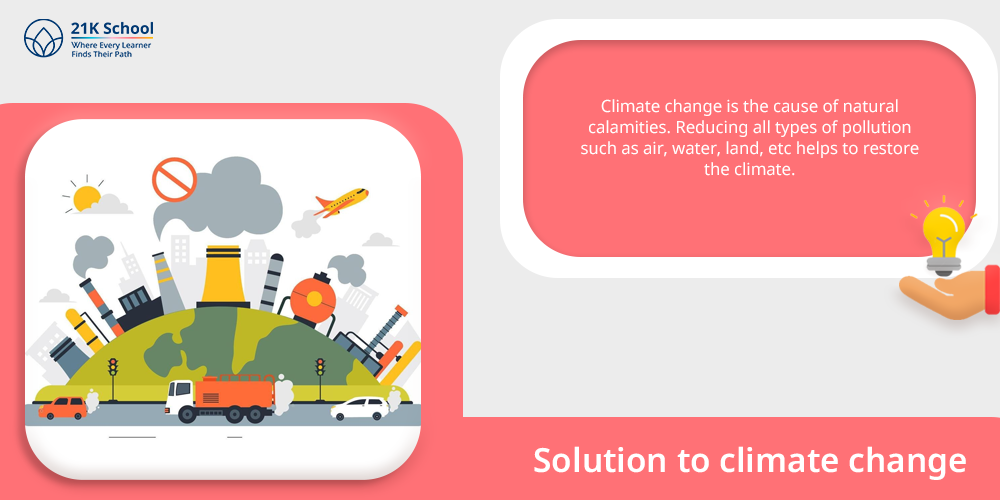
Climate change is the cause of natural calamities. Reducing all types of pollution such as air, water, land, etc helps to restore the climate.
Planting more and more trees and using green resources helps in restoring the climate.
7. Reduction of Population
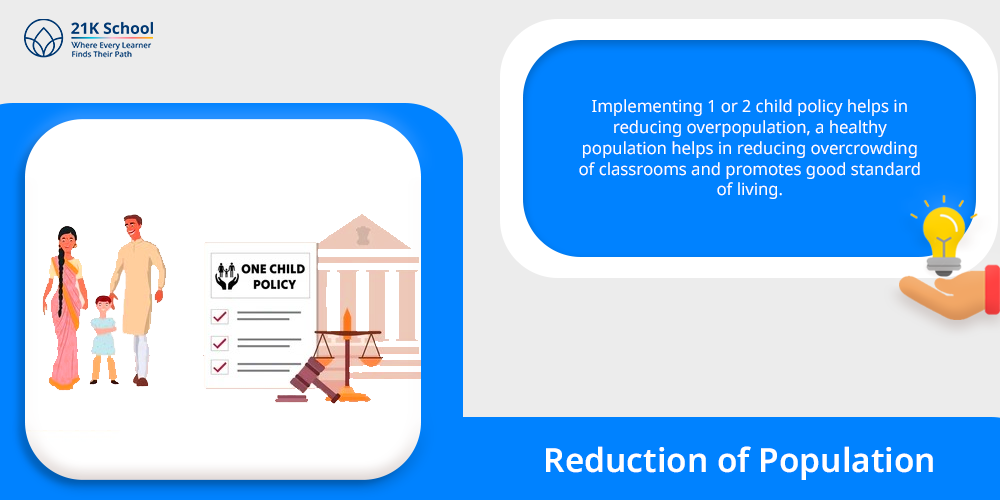
Reducing population is an effective way to control environmental issues.
Implementing 1 or 2 child policy helps in reducing overpopulation, a healthy population helps in reducing overcrowding of classrooms and promotes good standard of living.
8. Tackling Global Warming
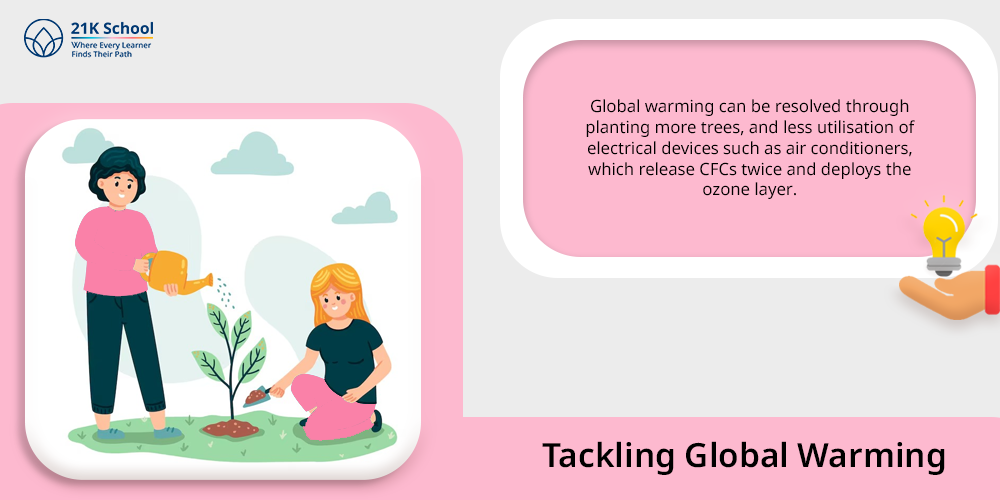
Global warming causes excessive heat waves and poor air quality.
Global warming can be resolved through planting more trees, and less utilisation of electrical devices such as air conditioners, which release CFCs twice and deploys the ozone layer.
By reducing the use of air conditioners in the classrooms, it helps in restoring the environment.
9 . Solid Waste Management
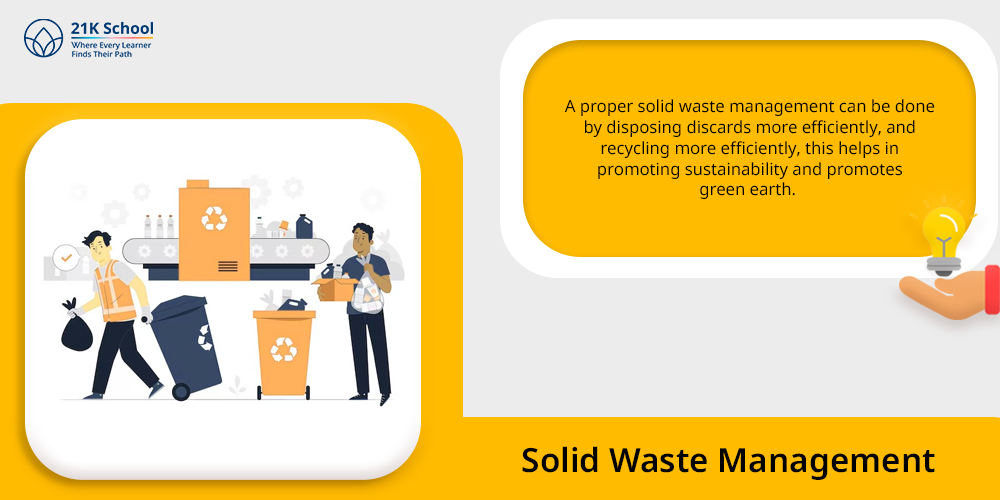
Solid waste management depletes the quality of earth and soil, which leads to major land pollution.
A proper solid waste management can be done by disposing discards more efficiently, and recycling more efficiently, this helps in promoting sustainability and promotes green earth.
Final Thoughts
Resolving issues with the school environment is essential to creating a positive learning environment and protecting students’ general wellbeing.
The problems caused by poor sanitation packed classrooms, natural disasters and pollution in many forms seriously impair learning outcomes and have an adverse effect on students’ health.
However schools can establish a more sustainable and healthy environment by putting into practice practical solutions like waste management, water conservation, energy efficiency and raising environmental awareness.
Collaboration between educators, legislators and communities is crucial to these initiatives because it guarantees that students can flourish both academically and personally in a supportive and safe setting.
By working together and being dedicated to sustainability we can create a more promising future for our schools and future generations.

